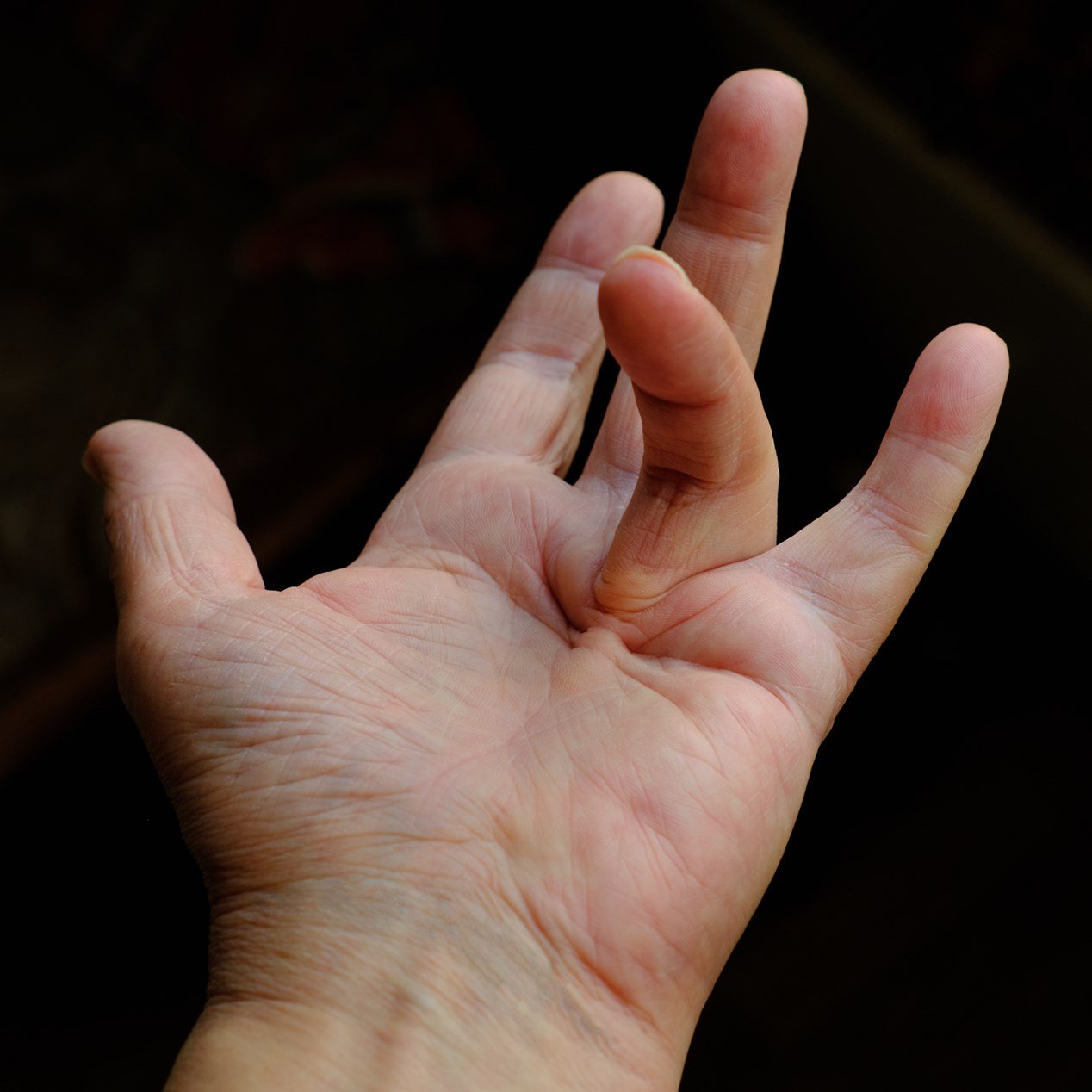Carpal tunnel syndrome is a common nerve compression disorder, affecting up to around one in six people in the UK. It occurs in the wrist and, in some cases, can cause significant discomfort and weakness. Carpal tunnel release surgery is an effective treatment when other non-surgical treatments are not enough to relieve symptoms.
Here, we will answer some of the most commonly asked questions about carpal tunnel syndrome and its surgical treatment.
What is carpal tunnel syndrome?
Carpal tunnel syndrome is one of the most common conditions affecting the upper limb, specifically the hand. It occurs when a nerve that runs through your wrist and into your palm, called the median nerve, is squeezed as it passes through a narrow passageway in the wrist called the carpal tunnel.
The median nerve carries sensory information (namely, touch, pain and temperature information) from parts of your thumb, index, middle and ring fingers to your brain. It also carries motor instructions from your brain to the muscles in your forearm, wrist and hand.
In carpal tunnel syndrome, increased pressure in the carpal tunnel squashes the median nerve, causing it to malfunction.
What are the common symptoms of carpal tunnel syndrome?
Symptoms are usually most noticeable at night and first thing in the morning. They include waking up with pain, numbness and/or a pins and needles sensation in some or all fingers of your hand.
You may find that you need to shake and/or massage your hand to ease your symptoms. In some cases, the pain can radiate up your forearm toward your elbow.
You may experience symptoms in the daytime too during certain activities, such as when driving or reading a book.
In more severe cases, numbness can be a persistent problem and consequently, you may find it difficult to handle small objects and may drop them.
In long-standing severe cases, some of the muscles at the base of your thumb may waste away and weaken. This will result in this part of your hand looking flattened compared to your unaffected hand and will cause a weak pinch and grip.
What causes carpal tunnel syndrome?
In most cases, there is no known cause of carpal tunnel syndrome. However, in some cases, there are contributing factors that increase the pressure in the carpal tunnel and consequently on the median nerve. These conditions usually increase pressure in the carpal tunnel by taking up the limited space in this narrow tunnel.
Conditions include those that increase fluid retention, such as pregnancy; those that cause inflammation and swelling of tendons, such as rheumatoid arthritis; bone deformities caused by arthritis or past fractures; hypothyroidism; diabetes; and crush injuries or fractures to the wrist or forearm.
Repetitive activities that involve the hand and wrist, and prolonged use of vibrating power tools may increase the risk of carpal tunnel syndrome too.
How is carpal tunnel syndrome diagnosed?
In most cases, your GP can diagnose carpal tunnel syndrome based on your symptoms, taking a detailed medical history and a physical examination of your hand and wrist.
If you have unusual symptoms, your GP may refer you to a specialist for nerve conduction studies. These studies test the electrical activity in the nerves in your arm and can help identify the precise area affected and the severity of the nerve compression.
How is carpal tunnel syndrome treated without surgery?
Treatment will depend on the underlying cause of your carpal tunnel syndrome. If hypothyroidism is the cause, daily hormone replacement tablets can help. If rheumatoid arthritis is the cause, anti-inflammatory or anti-rheumatoid medication can help.
If your carpal tunnel syndrome developed as the result of pregnancy, it will usually resolve after your baby is born, and in the meantime, your doctor will recommend avoiding activities that trigger or aggravate your symptoms.
If treatment of the underlying cause isn’t enough to ease your symptoms, or no underlying cause can be identified, your doctor may recommend wearing a splint at night.
Corticosteroid injections may also be recommended to help reduce swelling in the carpal tunnel.
When is surgery for carpal tunnel syndrome needed?
If non-surgical treatments, such as splints and medication, do not relieve your symptoms — as is often the case if you have moderate to severe carpal tunnel syndrome due to underlying bony deformities — your doctor may recommend carpal tunnel release surgery.
Surgery can be performed as traditional open surgery or via endoscopic surgery, which is also known as keyhole surgery and uses smaller cuts for a faster recovery.
How does traditional open surgery work for carpal tunnel syndrome?
Traditional open surgery for carpal tunnel syndrome is usually performed under a local anaesthetic, so you will be awake but not feel any pain during your procedure.
A 3–4 cm cut is made into the palm of your hand and the ligament that is pressing down on your median nerve is cut. This will release the pressure on the nerve and relieve your symptoms.
The wound is then sewn together with absorbable stitches and covered with a dressing and padded bandage.
How does endoscopic (keyhole) surgery work for carpal tunnel syndrome?
As with traditional open surgery, endoscopic carpal tunnel surgery is performed under a local anaesthetic. A 1–2 cm cut is made into your forearm, close to your wrist. Then, a camera is inserted so your surgeon can precisely see where to release the pressure on the median nerve by cutting through the ligament pushing against it.
No stitches are needed to close the wound. Instead, thin, sticky bandages called steri-strips are applied with a dressing and padded bandage placed on top.
What are the advantages of endoscopic (keyhole) carpal tunnel surgery?
Endoscopic carpal tunnel surgery has several advantages over traditional open surgery. Firstly, it requires a smaller cut that is less obtrusive as it is made into your forearm rather than the palm of your hand. Consequently, tenderness of the scar after surgery is less common. Also, no stitches are needed, whereas with traditional open surgery, you may need to visit a nurse to have your stitches removed.
With the wound site being on your forearm, rather than the palm of your hand, endoscopic surgery makes it easier to practice good hand hygiene without worrying about your dressing getting wet. Finally, the recovery time for endoscopic surgery is faster so you can return to your usual activities, including work, sooner.
The long-term outcomes are comparable for both traditional open and endoscopic carpal tunnel surgery.
When can you start using your hand again after endoscopic carpal tunnel surgery?
You can start moving your hand and return to light activities almost immediately after your surgery, so long as you don’t push yourself beyond the limits of what you find comfortable.
Two days after your surgery, the padded bandage can be removed. You will need to continue wearing the dressing for 10 days after your surgery.
If you have traditional open surgery, your stitches will need to be removed after 10–14 days. With endoscopic surgery, there are no stitches to be removed.
How quickly you can return to work depends on your occupation and how much repetitive hand work is required. If your work is desk-based, you can return to work after one to two weeks. If your work is manual, you may need two to four weeks, and if it involves the use of vibrating power tools, you may need longer.
What are the risks and complications of carpal tunnel release surgery?
Carpal tunnel release surgery is considered a safe and fairly simple procedure, which only takes 10–15 minutes to complete. However, every surgery comes with some risks.
Common complications for carpal tunnel release surgery include tenderness of your scar, minor bleeding and bruising, infection, accidental damage to nearby nerves, tendons or blood vessels, and persistent or recurring symptoms of carpal tunnel syndrome.
Between one in 20 and one in 50 individuals who undergo carpal tunnel release surgery will develop complex regional pain syndrome, which results in persistent, severe pain.


